Description
A Descriptive Test Bank for Excellence in Business Communication, 10/E By John V. Thill, Courtland L. Bovee, C. Allen Paul ISBN-10: 0133034070 • ISBN-13: 9780133034073
PART I. UNDERSTANDING THE FOUNDATIONS OF BUSINESS COMMUNICATION
1. Achieving Success through Effective Business Communication
2. Mastering Team Skills and Interpersonal Communication
3. Communicating in a World of Diversity
PART II. APPLYING THE THREE-STEP WRITING PROCESS
4. Planning Business Messages
5. Writing Business Messages
6. Completing Business Messages
PART III. CRAFTING BRIEF MESSAGES
7. Electronic Media
8. Social Media
9. Visual Media
10. Writing Routine and Positive Messages
11. Writing Negative Messages
12. Writing Persuasive Messages
PART IV. SUPPORTING MESSAGES WITH QUALITY INFORMATION
13. Finding, Evaluating, and Processing Information
PART V. PLANNING, WRITING, AND COMPLETING REPORTS AND PROPOSALS
14. Planning Reports and Proposals
15. Writing and Completing Reports and Proposals
PART VI. DESIGNING AND DELIVERING ORAL AND ONLINE PRESENTATIONS
16. Developing Oral and Online Presentations
17. Enhancing Presentations with Slides and Other Visuals
PART VII. WRITING EMPLOYMENT MESSAGES AND INTERVIEWING FOR JOBS
18. Building Careers and Writing Résumés
19. Applying and Interviewing for Employment
Appendix A. Format and Layout of Business Documents
Appendix B. Documentation of Report Sources
Appendix C. Correction Symbols
Excellence in Business Comm., 10e (Thill)
Chapter 1 Achieving Success Through Effective Business Communication
1) Communication is the process of
A) transferring information and meaning.
B) listening actively.
C) writing messages.
D) speaking to others.
E) none of the above.
Answer: A
Explanation: A) Communication is the process of transferring information and meaning between senders and receivers, using one or more written, oral, visual, or electronic media. The other answers are only part of the communication process.
Diff: 2 Page Ref: 3
Skill: Concept
Objective: 1
AACSB: Communication Abilities
Learning Outcome: Discuss the challenges and importance of business communications.
2) When it comes to communication skills, employers express particular frustration with
A) experienced workers who shun new technologies.
B) recent college graduates who haven’t learned how to adapt to a professional environment.
C) employees whose first language is not English.
D) male workers.
E) employees who believe they are tech-savvy.
Answer: B
Explanation: B) Not all situations call for the same type of communication skills. If you learn to write well, speak well, listen well, and recognize the appropriate way to communicate in any situation, you will gain a major advantage that will serve you well throughout your career. The other groups of employers are not necessarily going to have trouble communicating in a professional environment at all times.
Diff: 1 Page Ref: 3
Skill: Concept
Objective: 2
AACSB: Communication Abilities
Learning Outcome: Discuss the challenges and importance of business communications.
3) Stakeholders affected by the quality of business communication include
A) customers.
B) employees.
C) suppliers.
D) shareholders.
E) all of the above.
Answer: E
Explanation: E) Stakeholders are those groups of people affected in some way by the company’s actions like customers, employees, shareholders, suppliers, neighbors, the community, the nation, and even the world. The other groups of people are only one subset of all stakeholders.
Diff: 2 Page Ref: 3
Skill: Application
Objective: 1
AACSB: Communication Abilities
Learning Outcome: Discuss the challenges and importance of business communications.
4) Which of the following is not a characteristic of effective business messages?
A) They provide practical information.
B) They present the writer’s opinions as facts.
C) They state precise audience responsibilities.
D) They highlight and summarize essential information.
E) They are short.
Answer: B
Explanation: B) Opinions should be presented as opinions. If opinions are called for, give compelling evidence to support your opinion or conclusion. All the other answers are characteristics of effective business messages.
Diff: 2 Page Ref: 4
Skill: Critical Thinking
Objective: 2
AACSB: Communication Abilities
Learning Outcome: Plan and prepare business messages.
5) Business communication is often more demanding than social communication because communication on the job is affected by the
A) pervasiveness of technology.
B) growing reliance on teamwork in business.
C) globalization of business.
D) increasing value of business information.
E) all of the above.
Answer: E
Explanation: E) Business communication is increasingly relying on technology, teamwork with a diverse workforce, globalization to market products in other countries, knowledge workers to provide valuable business information to provide competitive insights. All of the factors listed play a part in business communication, while none of those necessarily play a part in social communication.
Diff: 2 Page Ref: 5-7
Skill: Concept
Objective: 2
AACSB: Communication Abilities
Learning Outcome: Discuss the challenges and importance of business communications.
6) A flatter organizational structure
A) tends to increase the chance of communication breakdowns.
B) helps make communication flow more efficiently.
C) is obsolete now that social networking is so widespread.
D) is helpful for small companies only.
E) makes internal conflict more difficult to manage.
Answer: B
Explanation: B) Tall structures have many layers of management between the lowest and highest positions, which can lead to communication breakdowns. Flat structures reduce the number of layers and promote more open and direct communication. The other answers are incorrect because a flatter organizational structure facilitates communication, and better communication will never become obsolete or make problems more difficult.
Diff: 3 Page Ref: 7
Skill: Concept
Objective: 2
AACSB: Communication Abilities
Learning Outcome: Discuss the challenges and importance of business communications.
7) In which of the following organizational structures do employees report to two managers at the same time?
A) virtual organization
B) matrix structure
C) network structure
D) modern structure
E) none of the above
Answer: B
Explanation: B) In a matrix structure, employees report to two managers at the same time such as a project manager and a department manager. The other answers refer to other organizational structures and leadership styles of companies that can exist.
Diff: 2 Page Ref: 7
Skill: Concept
Objective: 2
AACSB: Communication Abilities
Learning Outcome: Describe best practices in team and interpersonal communication.
8) The term corporate culture refers to
A) the number of organizational levels within a corporation.
B) the extent to which corporations dominate a particular culture.
C) the mixture of values, traditions, and habits that give a company its atmosphere and personality.
D) a company’s sponsorship of events such as concerts and plays.
E) the heavy influence business has had on our society.
Answer: C
Explanation: C) Corporate culture refers to the mixture of values, traditions, and habits that a particular company has that give that company its atmosphere and personality. Some companies encourage an open climate to promote candor and honesty which can encourage employees to admit their mistakes and disagree with the boss.
Diff: 1 Page Ref: 7
Skill: Concept
Objective: 2
AACSB: Communication Abilities
Learning Outcome: Discuss the challenges and importance of business communications.
9) An example of downward communication is
A) a junior staff person giving information to a staff supervisor.
B) a sales manager giving instructions to a salesperson.
C) an email message about sick leave from one staff secretary to another.
D) a company briefing held on the organization’s top floor.
E) a conversation between colleagues that quickly becomes hostile.
Answer: B
Explanation: B) Downward communication flows from executives to employees. For example, when the president conveys executive decisions, and provides employees information that help them do their jobs.
Diff: 1 Page Ref: 8
Skill: Application
Objective: 3
AACSB: Communication Abilities
Learning Outcome: Describe best practices in team and interpersonal communication.
10) An example of horizontal communication is
A) a junior staff person giving information to a staff supervisor.
B) a company briefing held on the organization’s ground floor.
C) an email message about sick leave sent from one department secretary to a secretary in a different department.
D) an email message that sparks a chain of multiple replies.
E) all of the above.
Answer: C
Explanation: C) Horizontal communication flows between departments to help employees share information, coordinate tasks, and solve complex problems.
Diff: 1 Page Ref: 8
Skill: Application
Objective: 3
AACSB: Communication Abilities
Learning Outcome: Describe best practices in team and interpersonal communication.
11) Every organization has
A) an intranet.
B) an extranet.
C) an informal communication network.
D) a tall communication structure.
E) a flat structure.
Answer: C
Explanation: C) Every organization has an informal communication network (also called the grapevine or rumor mill), which encompasses all communication that occurs outside the formal network. Some of it occurs naturally as a result of employee interaction on the job and in social settings. Organizations do not necessarily have an internet, an extranet, a tall or flat structure.
Diff: 2 Page Ref: 8
Skill: Concept
Objective: 3
AACSB: Communication Abilities
Learning Outcome: Describe best practices in team and interpersonal communication.
12) In most organizations, the rumor mill tends to be particularly active when
A) employees are satisfied with their jobs.
B) formal communication channels are working efficiently.
C) employees are wasting company time.
D) the formal communication network is not providing the information employees want.
E) there is a lack of gender balance among the employees.
Answer: D
Explanation: D) The rumor mill tends to be more active when the formal communication network is not providing the information employees need and want. People feel more comfortable and secure with strong communication. If that breaks down, people will look to informal sources. The other answers are not at all related to how a rumor mill works.
Diff: 2 Page Ref: 8
Skill: Synthesis
Objective: 3
AACSB: Communication Abilities
Learning Outcome: Describe the opportunities and challenges of communicating in a diverse world.
13) ________ communication flows between departments to help employees share information, coordinate tasks, and solve complex problems.
A) Upward
B) Downward
C) Horizontal
D) Diagonal
E) Circular
Answer: C
Explanation: C) If a secretary sends an email to another secretary in a different department on a new company wide policy, that is considered horizontal communication. Upward and downward are other directions that communication can flow in a formal network. There is no such thing as diagonal or circular.
Diff: 1 Page Ref: 8
Skill: Concept
Objective: 3
AACSB: Communication Abilities
Learning Outcome: Describe best practices in team and interpersonal communication.
14) Generally speaking, limitations of the formal communication network
A) discourage employees from taking advantage of social media.
B) have not affected the popularity of social media in the business environment.
C) have helped to spur the growth of social media in the business environment.
D) tend to decrease employees’ dependence on the Internet.
E) do none of the above.
Answer: C
Explanation: C) Formal communication can only flow downward, upward, and horizontally. This does not encourage communication to flow more freely. As a result, social media has grown in the business environment to fill that gap. The limitations of the formal communication network has encouraged employees to take advantage of social media, increased the popularity of social media in a business environment, and increased employees’ dependence on the Internet.
Diff: 3 Page Ref: 8
Skill: Synthesis
Objective: 3
AACSB: Communication Abilities, Use of IT
Learning Outcome: Describe the opportunities and challenges of communicating in a diverse world.
15) To make your communication more effective,
A) clearly address your audience’s wants and needs-not yours.
B) include as much information as possible, even if you’re not sure it’s necessary.
C) send the same messages by multiple channels.
D) avoid face-to-face conversations and communicate entirely by phone and email.
E) do all of the above.
Answer: A
Explanation: A) An audience-centered approach involves understanding and respecting the members of your audience and making every effort to get your message across in a way that is meaningful to them. The other answers will only make your communication less effective.
Diff: 2 Page Ref: 9
Skill: Concept
Objective: 3
AACSB: Communication Abilities
Learning Outcome: Plan and prepare business messages.
16) In the first step of the communication process, the sender
A) decides what to say.
B) chooses a communication channel.
C) has an idea.
D) chooses a communication medium.
E) evaluates his or her options.
Answer: C
Explanation: C) Whether a communication effort will ultimately be effective starts with an idea. For example, if you have a clear idea about a procedure change that will save your company time and money, the communication process is off to a strong start. However, if all you want to do is complain and do not have any solutions to your complaint, you probably will not communicate anything of value to your audience. The other answers are what the sender should do after having an idea.
Diff: 1 Page Ref: 10
Skill: Concept
Objective: 3
AACSB: Communication Abilities
Learning Outcome: Compose and shape business messages.
17) The final step in the communication process is
A) receiving the message.
B) sending the message.
C) the audience providing feedback to the sender.
D) interpreting the message.
E) decoding the message.
Answer: C
Explanation: C) When the audience provides feedback to the sender, this can help the sender evaluate the effectiveness of the communication effort. Feedback can be verbal, nonverbal, or both. However, this feedback may need to be decoded carefully. A smile, for example, can have many meanings. The other steps are earlier steps in the communication process.
Diff: 2 Page Ref: 11
Skill: Concept
Objective: 3
AACSB: Communication Abilities
Learning Outcome: Describe best practices in team and interpersonal communication.
18) Uncomfortable meeting rooms, multitasking, and computer screens filled with popup messages are all examples of
A) problems with feedback.
B) distractions.
C) problems with background differences.
D) overload problems.
E) social media.
Answer: B
Explanation: B) Distractions can be anything that forces a person to focus on something other than the task at hand. For example, uncomfortable meeting rooms, crowded computer screens with unnecessary information, and thoughts or emotions not related to the task being worked on.
Diff: 2 Page Ref: 11
Skill: Application
Objective: 3
AACSB: Communication Abilities
Learning Outcome: Discuss the challenges and importance of business communications.
19) Which of the following is not one of the five ways to get the audience to notice your messages?
A) Acknowledge the importance of the situation.
B) In every message, admit that you could be wrong.
C) Use words, images, and designs that are familiar.
D) Consider audience expectations.
E) Ensure ease of use.
Answer: A
Explanation: A) The five ways to get the audience to notice your message is to 1) consider audience expectations, 2) ensure ease of use, 3) emphasize familiarity, 4) practice empathy, and 5) design for compatibility. The other answers are what the sender should do to get the audience to notice your message.
Diff: 2 Page Ref: 12-13
Skill: Concept
Objective: 2
AACSB: Communication Abilities
Learning Outcome: Plan and prepare business messages.
20) During a long meeting, you notice that you’re automatically questioning the motives of anyone whose viewpoint does not match your own . You are engaging in
A) discrimination.
B) misreading.
C) selective perception.
D) stereotyping.
E) effective business communication.
Answer: C
Explanation: C) Selective perception is when a message recipient may simply distort the information to make it fit rather than change their perception of reality. Discrimination, misreading, and stereotyping are other problems that can occur when two people of different cultural and personal beliefs communicate. In effective business communication, none of those answers would be occurring.
Diff: 2 Page Ref: 13
Skill: Critical Thinking
Objective: 3
AACSB: Communication Abilities
Learning Outcome: Describe the opportunities and challenges of communicating in a diverse world.
21) In order for audience members to respond appropriately to a business message, they must
A) remember the message.
B) be able to respond to the message.
C) be motivated to respond to the message.
D) do all of the above.
E) do none of the above–communication is a simple process that everyone is naturally good at.
Answer: D
Explanation: D) First, the recipient has to remember the message long enough to act on it. Second, the recipient has to be able to respond as you wish. Lastly, the recipient has to be motivated to respond. The other answers are only one part of what the audience must do to respond appropriately.
Diff: 2 Page Ref: 14
Skill: Concept
Objective: 3
AACSB: Communication Abilities
Learning Outcome: Plan and prepare business messages.
22) “Business Communication 2.0” refers to
A) high-level correspondence as opposed to routine documents.
B) a new approach to business communication, emphasizing interaction and conversation rather than one-way publication.
C) specialized software that enables professionals to create impressive documents easily and efficiently.
D) the informal, abbreviation-laden writing style of today’s younger generation.
E) none of the above.
Answer: B
Explanation: B) Technology has created a new social communication model which is also interactive and conversational. Customers and others are now empowered through social media. When customers participate by sharing or revising content, they are transformed from passive audiences to active participants. Business communication 2.0 is a convenient label for this new approach to business communication.
Diff: 1 Page Ref: 14
Skill: Concept
Objective: 3
AACSB: Communication Abilities
Learning Outcome: Explain how to create brief messages for different electronic media.

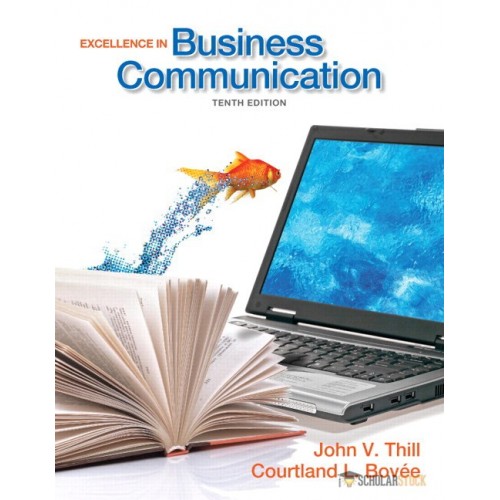
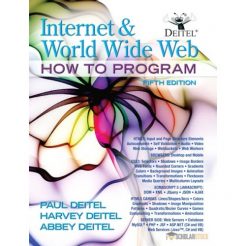
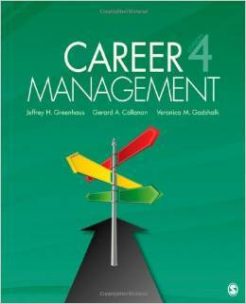
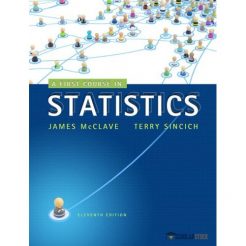
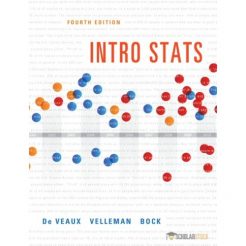

Reviews
There are no reviews yet.